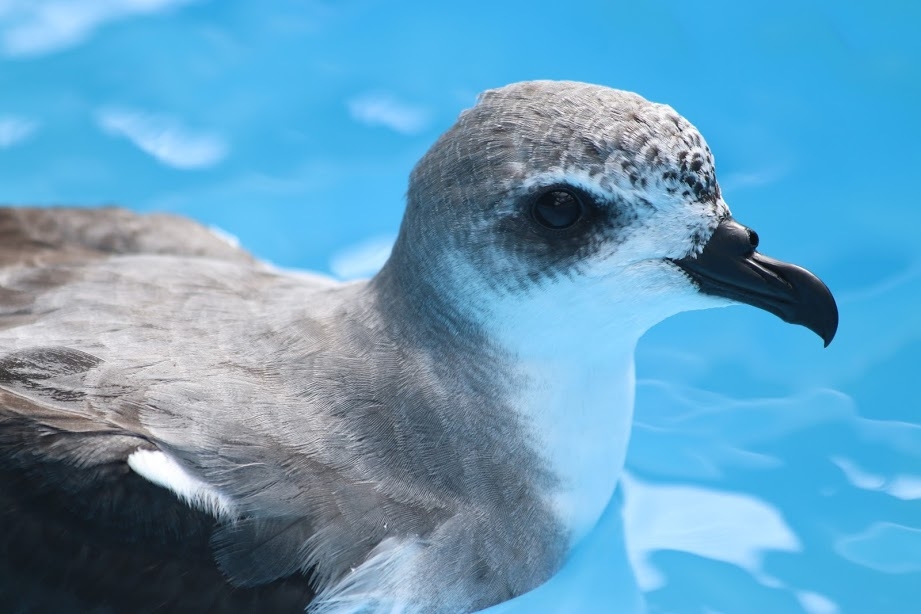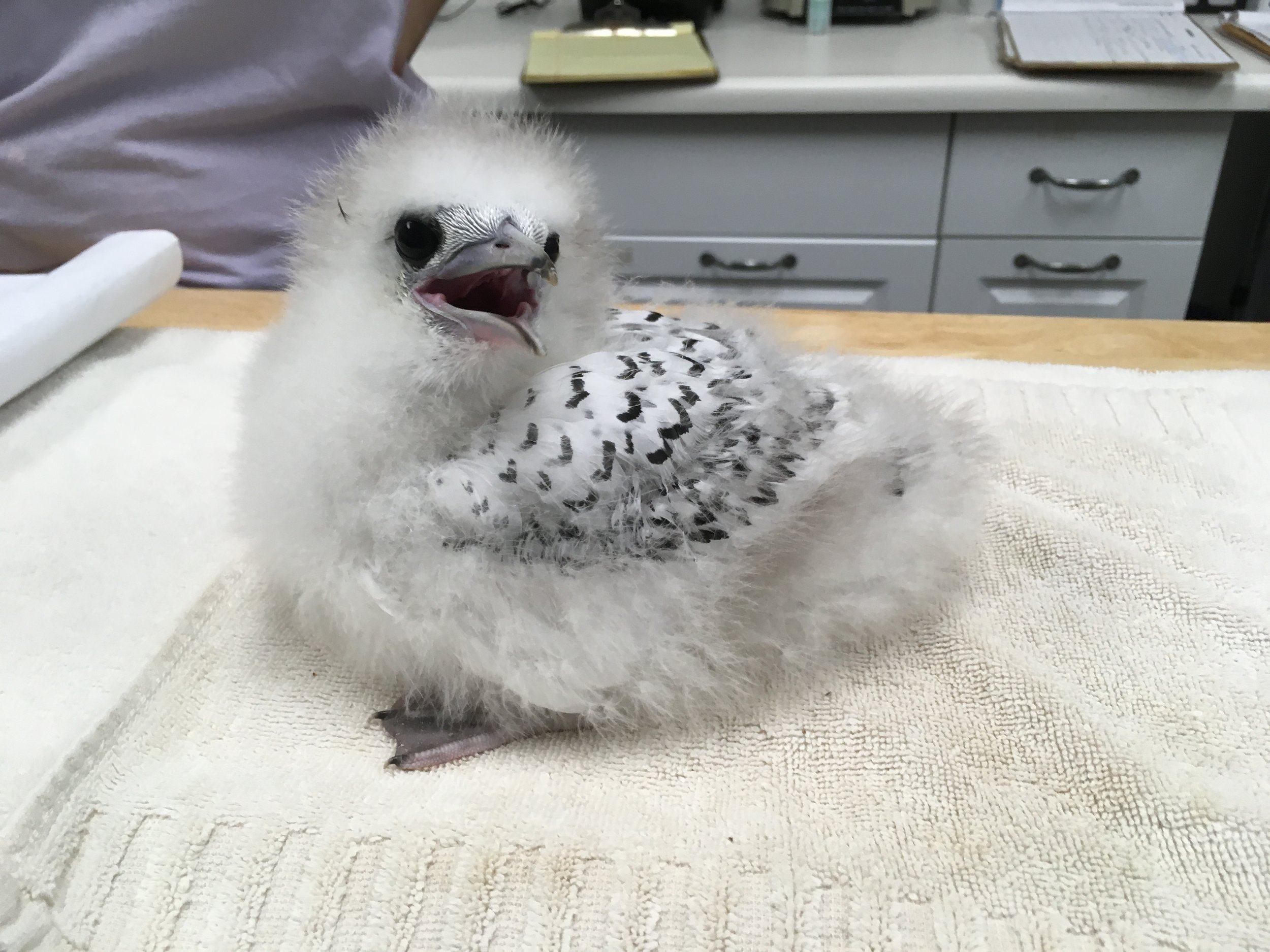
Meet the Birds
Save Our Shearwaters rehabilitates all native Hawaiian birds. Below is a list of some of the patients that are admitted for rehabilitation. For more comprehensive information regarding the recovery of native seabirds, visit the Kauaʻi Endangered Seabird Recovery Project.
Newell's Shearwater/‘A‘o
Federal Status: Threatened
State Status: Threatened
IUCN Red List: Critically Endangered
The Newell’s Shearwater is the most commonly grounded seabird during 'fallout' season. The species can be easily distinguished by its ‘formal wear’ of black and white plumage, dark bill and pink legs with black toes.
Protecting the Newell's Shearwater on Kauaʻi is vital to the species survival considering the fact that Kauaʻi is home to 90% of the remaining population.
Hawaiian Petrel/‘Ua‘u
Federal Status: Endangered
State Status: Endangered
IUCN Red List: Vulnerable
The Hawaiian Petrel is found exclusively on main Hawaiian Islands. In a recent study conducted by the Kauai Endangered Seabird Recovery Project and Cooper & Day, they found that the population of Hawaiian Petrels has declined by 78% (Raine et al 2017) since the early 1990s.
Band-rumped Storm Petrel / 'akē'akē
Federal Status: Candidate for Endangered Species Listing
State Status: Endangered
IUCN Red List: Least Concern
The Band-rumped Storm Petrel can be found in both the Atlantic and Pacific Oceans. The species is hard to study due to the fact that it spends its non-breeding period at sea and its breeding areas are in hard to reach locations. The population size around the main Hawaiian Islands is estimated in the low hundreds.











Wedge-tailed Shearwater / 'ua'u kani
Status: Least Concern
Wedge-tailed Shearwaters are very common on the island of Kauaʻi. They are easily spotted throughout their breeding season from March to November flying in and out of their coastal colonies. Their unique vocalization has been reported to sound like deep moaning or groaning.
Laysan Albatross/Mōlī
Status: Near-Threatened
The Laysan Albatross is a common sight on the north shore of Kauaʻi. These birds choose to nest on open ground. They make a shallow depression in the ground and build up the outer rim of the nest.
The Laysan Albatross is known to have a lifespan averaging 12-40 years. The oldest known Laysan Albatross, Wisdom, is at least 68 years old!
Hawaiian Goose/nēnē
Federal Status: Endangered
State Status: Endangered
IUCN Red List: Vulnerable
The Hawaiian Goose is only found in Hawaiʻi and is Hawaii's official state bird. It is one of the only survivors of 11 different species of waterfowl that evolved on the Hawaiian Islands (eight of which are extinct). The Hawaiian Goose population dwindled down to only 30 birds in the early 1950s. Thanks to conservation efforts on the islands, the population has been recently estimated at over 3,000 birds.
White-tailed Tropicbird/Koa'e kea
Status: Least Concern
The White-tailed Tropicbird is mostly seen around Hawaiʻi and the Dry Tortugas, Florida in the United States. Adults sport a long white tail and large black patches on the greater wing coverts. White-tailed Tropicbirds catch prey by plunging into the water to catch and swallow their prey before flight. They are able to use their half-bent wings underwater to make quick movements and capture prey.







